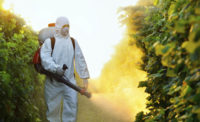Outdoor work is a year-round phenomenon, with construction and agriculture among industries that see many employees working outside during the colder months. Along with the changing of the seasons, there are other risk factors you should consider if part or the majority of your workforce operates outdoors, especially if working long shifts.
Millions of people work outside every year. Here are ten basic safeguards for outdoor worker safety…
Identify problems and hazards and decide who is at risk, especially in hot weather. Main factors include:
- Working climate – including air temperature, movement, and proximity to heat sources when working.
- Medical, genetic and other factors – a worker’s age and build may influence heat tolerance.
Advise about the dangers of sun exposure, the risks of heat stress and offer guidance on sun protection and checking the skin regularly for damage.
Sun cream
Under strong sunrays, skin can burn very quickly, potentially causing severe discomfort, sunstroke or even skin cancer. Sun cream should always be used by outdoor workers and reapplied according to the manufacturer’s instructions.
Clothing
Outdoor workers should be advised to keep covered up comfortably. It is not uncommon for employers to consider relaxing the usual dress code when it is very hot outside; hats should be used in relevant conditions to protect the head.
Hydration
Encourage workers to keep hydrated by providing cool water in the workplace, combatting heat stress and overheating. Drinking water regularly will help prevent dehydration and is preferable to coffee or tea where hydration is concerned.
Shade
Periods out of the sun can be encouraged by employee breaks in the shade where possible. Workers who can rest comfortably and rehydrate are more likely to be more productive.
Allergies
Allergies can be triggered if workers are in an environment where they may suffer a reaction. Providing protective equipment such as masks or glasses in problem areas can help prevent issues and keep productivity up.
Keep food cool
When employees bring their own food to work, it needs to be kept cool during warm conditions to prevent the possibility of illness and time off work resulting from contaminated food.
Work rate
Schedule work so exposure to the sun is minimized. Always be aware of the amount of labor needed and the amount of time required for it to be done.
Heat stress
Where possible, control workplace temperature inside. Outside workers need regular breaks, with access to shade, and good hydration to reduce the possibility of heat stress.
Source: www.seton.co.uk






